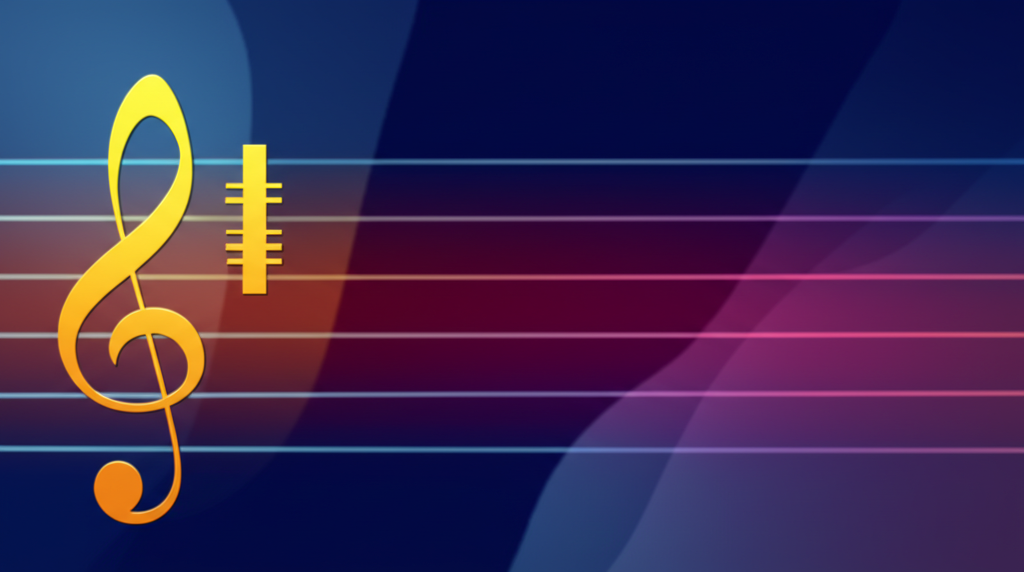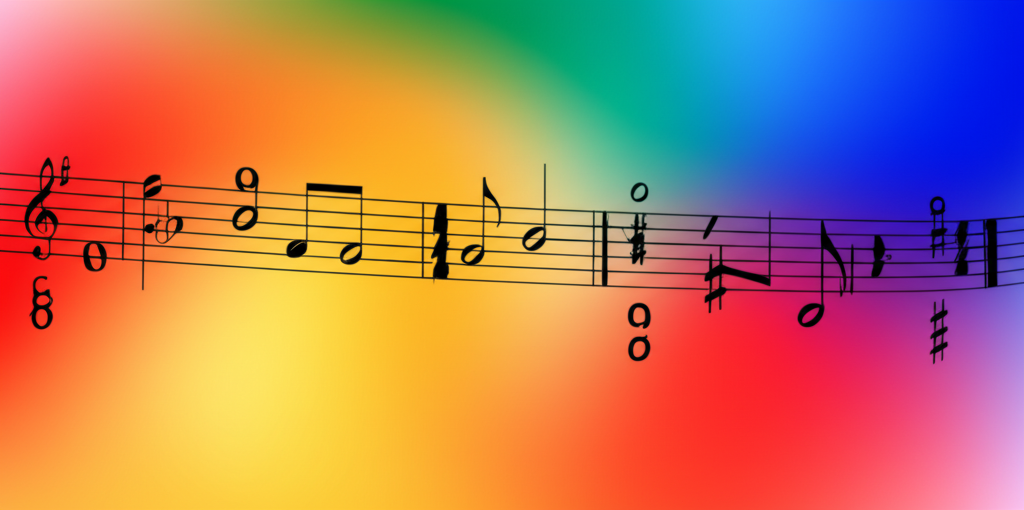
Augmented Chord: The Mysterious Symmetrical Harmony

b4n1
June 14, 2025, 12:53 a.m.
Augmented Chord: The Mysterious Symmetrical Harmony
Summary:
The augmented chord, built with two major thirds stacked on top of each other, creates a uniquely unstable and mysterious harmony. This symmetrical chord divides the octave into three equal parts and serves as a powerful tool for modulation, creating tension, and adding exotic color to musical compositions.
Keywords:
Augmented chord, augmented triad, major thirds, symmetrical harmony, raised fifth, sharp five, modulation, chromatic harmony, diminished chord relationship.
Introduction:
The augmented chord stands as one of music's most intriguing harmonies, built from two major thirds that create a perfectly symmetrical structure. Unlike major or minor chords that have a clear sense of resolution, the augmented chord exists in a state of perpetual tension, making it an ideal tool for creating mystery, suspense, and smooth modulations between distant keys.
This chord's unique property of being able to resolve to multiple different harmonies makes it a favorite among composers seeking to create harmonic ambiguity or to move between unrelated tonal centers. Its dreamy, floating quality has made it a staple in impressionistic music, jazz harmony, and film scoring.
Structure and Construction:
An augmented chord consists of:
- Root: The foundation note
- Major third: 4 semitones above the root
- Augmented fifth: 8 semitones above the root (raised fifth)
Interval Structure:
Major third + Major third
Root to third: 4 semitones
Third to augmented fifth: 4 semitones
Total span: 8 semitones (augmented fifth)
Examples:
C Augmented Chord:
All Augmented Chord Inversions:
Augmented Chord Progression:
Harmonic Quality and Character:
The augmented chord possesses unique harmonic characteristics:
- Unstable: Strong tendency to resolve outward
- Mysterious: Creates floating, dreamlike quality
- Symmetrical: Divides octave into three equal parts
- Chromatic: Contains notes outside the diatonic scale
- Ambiguous: Can function in multiple keys simultaneously
Symmetrical Properties:
The augmented chord's most remarkable feature is its symmetry:
- Equal divisions: Each note is 4 semitones apart
- Enharmonic equivalence: Only four different augmented chords exist
- Multiple roots: Any note can serve as the root
- Infinite cycle: Stacking major thirds continues infinitely
The Four Augmented Chords:
1. C - E - G# (= E# - A♭ - C = G# - B# - D#)
2. C# - F - A (= D♭ - F - A = F - A - C#)
3. D - F# - A# (= F# - A# - D = A# - D - F#)
4. D# - G - B (= E♭ - G - B = G - B - D#)
Classical Usage:
Classical composers employed augmented chords strategically:
- Bach: Used for chromatic voice leading
- Wagner: Extensive use in "Tristan und Isolde"
- Liszt: Programmatic and descriptive passages
- Debussy: Impressionistic color and atmosphere
- Chopin: Romantic expression and modulation
Jazz and Popular Music:
Modern music embraces the augmented chord's versatility:
- Jazz standards: Chromatic passing chords
- Bebop: Complex harmonic progressions
- Film music: Creating suspense and mystery
- Pop ballads: Emotional harmonic color
- Latin music: Exotic harmonic flavors
Resolution Patterns:
Augmented chords typically resolve in predictable ways:
Outward Resolution:
- Augmented fifth moves up by semitone
- Root and third may move inward or stay
- Creates expansion of the harmony
Common Resolutions:
- C+ to F: C-E-G# to C-F-A
- C+ to Am: C-E-G# to C-E-A
- C+ to F#: C-E-G# to C#-F#-A#
Common Augmented Resolutions:
Modulation Tool:
Augmented chords excel at modulation:
- Pivot chord: Belongs to multiple keys
- Chromatic mediant: Moves to distantly related keys
- Smooth voice leading: Minimal movement between chords
- Enharmonic modulation: Reinterpret the same chord
Relationship to Diminished Chords:
Augmented and diminished chords share important properties:
- Symmetrical construction: Both divide octave equally
- Limited transpositions: Only a few unique forms
- Multiple functions: Can serve various harmonic roles
- Chromatic harmony: Both add non-diatonic color
Extended Augmented Harmonies:
Augmented chords can be extended:
- Aug7: Add major seventh (rarely used)
- Aug9: Add ninth for more complex color
- AugMaj7: Augmented triad with major seventh
- Stacked augmented: Multiple augmented triads
Famous Musical Examples:
Notable uses of augmented chords:
- "Oh! Darling": The Beatles' use for emotional impact
- "Tristan und Isolde": Wagner's chromatic harmony
- "Clair de Lune": Debussy's impressionistic color
- "Giant Steps": Coltrane's jazz progression
- Film scores: Creating mysterious atmosphere
Compositional Techniques:
Effective ways to use augmented chords:
- Passing chord: Between diatonic harmonies
- Chromatic approach: Leading to target harmony
- Color chord: Adding harmonic interest
- Modulatory tool: Facilitating key changes
- Climactic moment: Creating harmonic peak
Performance Considerations:
Intonation:
Augmented chords present tuning challenges:
- Augmented fifth requires precise intonation
- Ensemble coordination essential
- Equal temperament vs. just intonation considerations
Voice Leading:
Smooth voice leading with augmented chords:
- Avoid parallel augmented fifths
- Resolve augmented interval outward
- Use chromatic voice leading
Ear Training and Recognition:
Developing augmented chord recognition:
- Quality recognition: Compare to major and minor triads
- Harmonic context: Identify in progressions
- Resolution training: Practice common resolutions
- Melodic approach: Sing arpeggios and scales
Common Mistakes:
- Overuse: Too many augmented chords can lose effect
- Poor resolution: Not following natural voice leading
- Wrong context: Using in inappropriate musical styles
- Spelling errors: Incorrect enharmonic spelling
Psychological Effects:
Augmented chords create specific emotional responses:
- Mystery: Creates sense of the unknown
- Tension: Harmonic instability
- Dreams: Floating, ethereal quality
- Suspense: Anticipation of resolution
- Exoticism: Non-Western harmonic flavor
Fun Facts:
- Only four different augmented chords exist due to enharmonic equivalence.
- The augmented chord is its own inversion - mathematically perfect symmetry.
- Liszt was one of the first to exploit the augmented chord's modulatory potential.
- The whole-tone scale can be harmonized entirely with augmented chords.
- Augmented chords appear frequently in video game music for mysterious areas.
Historical Development:
The augmented chord's role has evolved:
- Baroque: Rare, used for special effects
- Classical: Occasional chromatic harmony
- Romantic: Frequent use for expression and modulation
- Impressionist: Fundamental to the harmonic palette
- Modern: Standard chord in jazz and popular music
Practice Exercises:
For Pianists:
Practice augmented chord progressions and arpeggios in all keys.
For Composers:
Experiment with augmented chords as pivot chords for modulation.
For Improvisers:
Use augmented chords to create harmonic color and smooth voice leading.
Conclusions:
The augmented chord stands as one of music's most fascinating harmonic structures, combining mathematical perfection with emotional ambiguity. Its unique symmetrical properties make it an invaluable tool for modulation, while its mysterious quality adds depth and sophistication to musical compositions.
Understanding the augmented chord opens doors to advanced harmonic concepts including chromatic voice leading, enharmonic modulation, and symmetrical harmony. Whether used sparingly for special effects or as a fundamental part of a harmonic language, the augmented chord rewards study with its endless possibilities for musical expression.
Mastering this chord enhances both compositional technique and analytical understanding, providing insight into how composers from Wagner to modern jazz musicians have used harmonic ambiguity to create some of music's most compelling and memorable moments.





